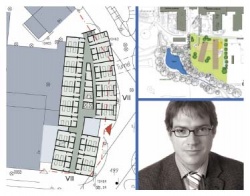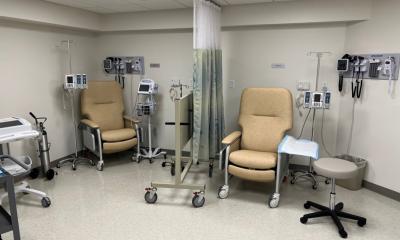The Patients Hotel
Optimising wards for low-care patients
A number of hospitalised patients need little nursing.

However, due to the traditional, indication-based distribution of in-patients, they currently occupy beds in acute wards that are cost-intensive due to the high level of staffing. For an organisation, it is difficult to react to an inconsistent number of up to three low-care patients randomly arriving. For example, patients with coronary diseases or hypertension and awaiting diagnostic procedures, do not always need acute beds. A patient who is about to give birth needs a midwife’s attendance, but later, after delivery she would be happy to have also her family’s presence.
The new concept is to pool all low-care patients across interdisciplinary barriers, in a new facility that offers more comfort and a hotel-like atmosphere. Physiotherapy and a wellness area would complete the services. An emergency call system would be provided. To minimise distance and utilise medical services, the hotel-hospital would neighbour or be within a hospital. Family members could also stay in the same room as the patient, and certain nursing activities could be delegated to the family. The patients hotel would be offered to out-patients living some distance away, or to foreign patients. It might also serve as a representative location for congresses.
Within the DRG system, hospitals earn a fee per case, regardless of real expenses arising. Efficient processes and a slim infrastructure pay off.
The concept of building a patients hotel is being evaluated at the new University Schleswig-Holstein, where member of the Board Barbara Schulte introduced the project after visiting a similar facility in Scandinavia. Countries that have had a case-fee-based refunding system for years are currently better adapted to this situation, she pointed out.
In a feasibility study to compare existing hotels for patients in Scandinavian universities with the situation in Schleswig-Holstein, the current low-care volume was evaluated by noting nursing activities and using an indication-based questionnaire for physicians. International healthcare consultant Dr Gregor Zehle, who developed the first business plan, said: ‘The economic aspects of the project are promising, but most important is the integration of the new facility into efficient processes of the University Hospital. The patient is our focus. He or she will be treated like a guest. The environment will be like home and services will guarantee safety and optimal medical treatment.’
For hospitals, this project is one of the first public/private partnership models in Germany. The university plans to look for an investor, who will construct the facility. A partner from the hotels industry will provide the services. In this way, the university will gain from private partners’ experience and limit the risk in construction and operation of the new facility. The first declaration of interest procedure has underlined the attraction of this project.
23.05.2006





